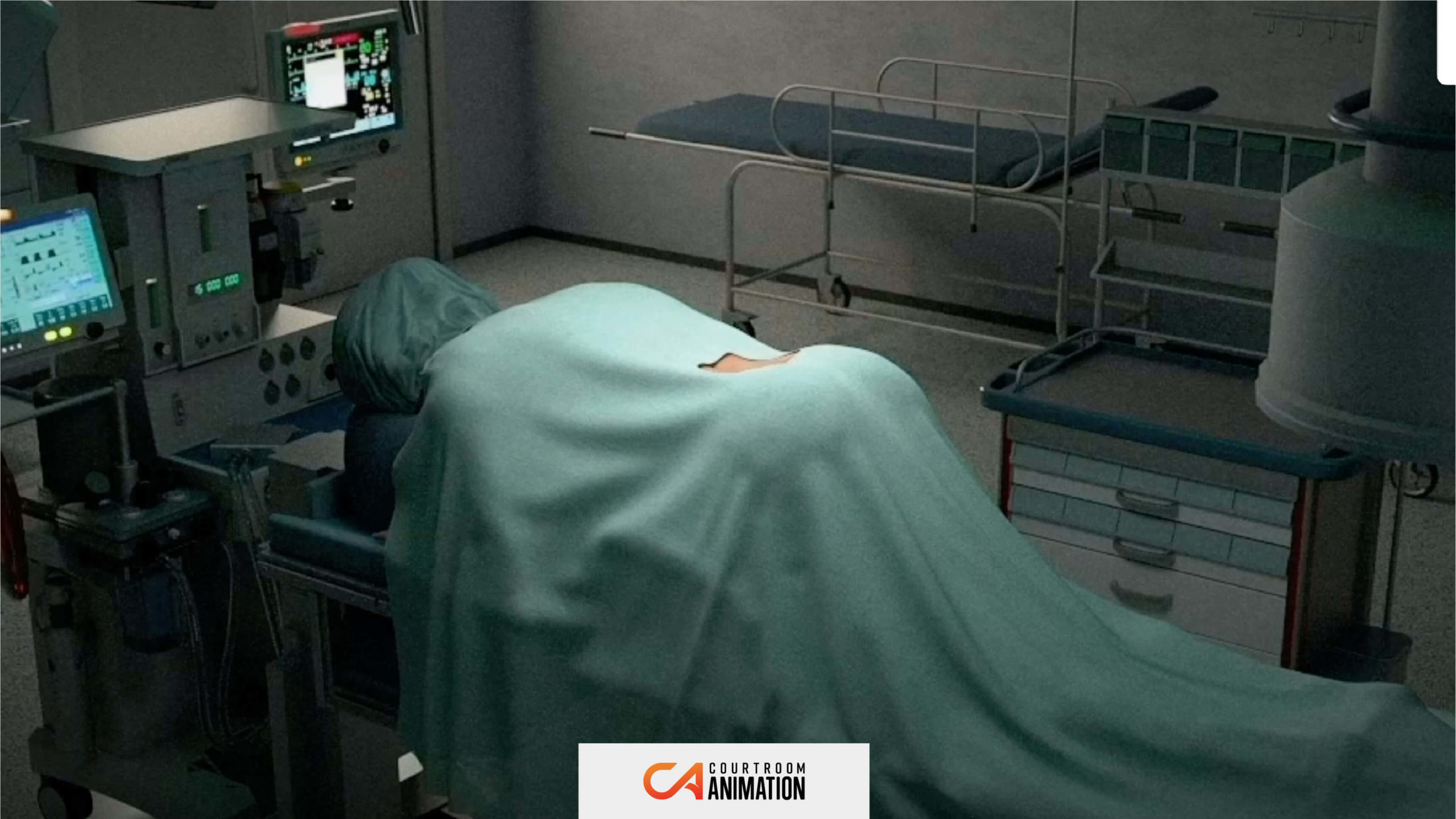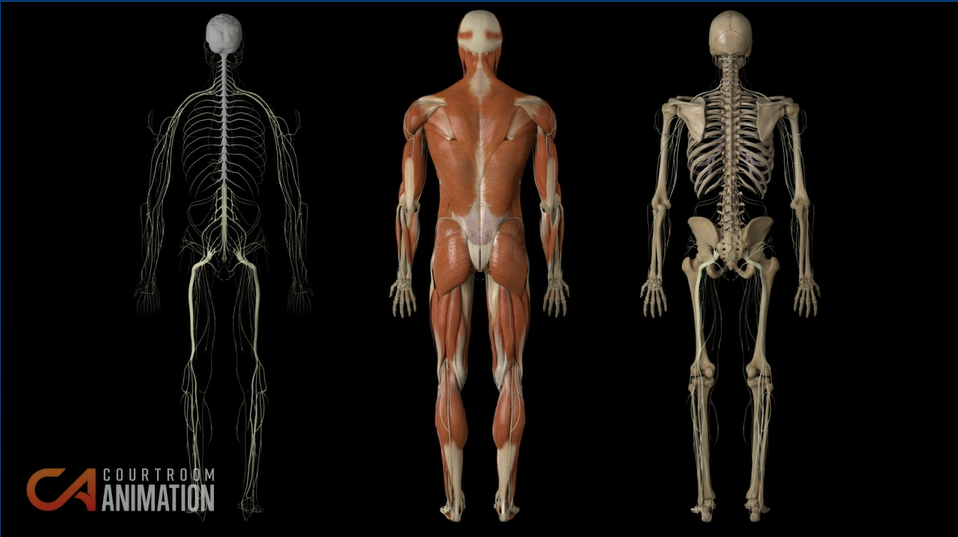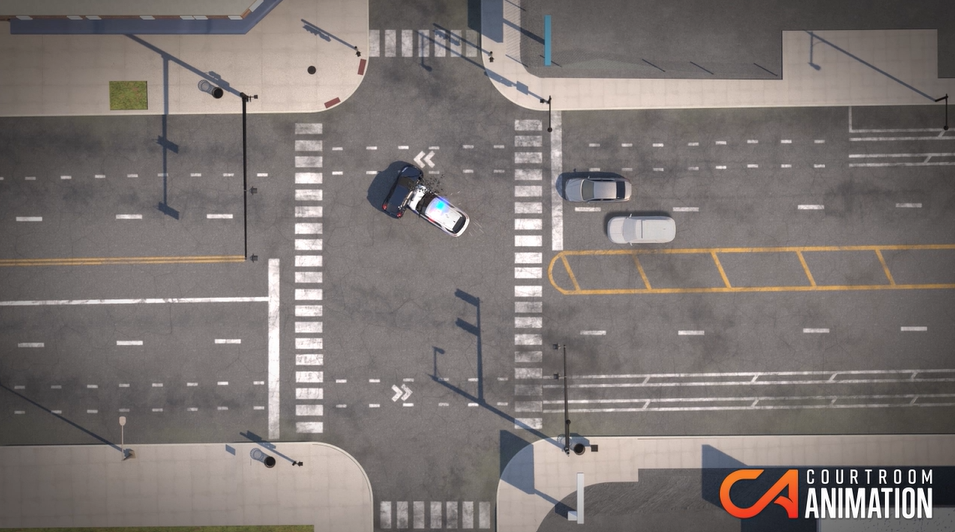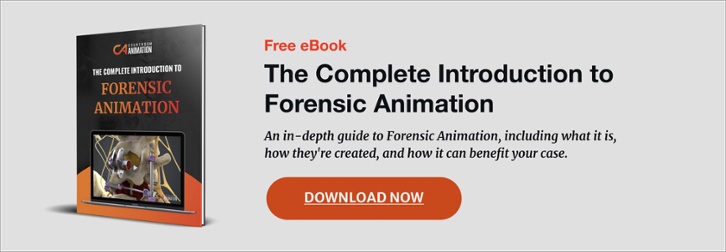
It’s said that there are three sides to every story: Their side, your side, and the truth.
When the facts are spread out with complex information across multiple testimonies, it can be difficult to make a clear case that earns a favorable verdict. During civil litigation, getting a jury to understand your side of the case means your trial graphics presentation will have to provide clear insight.
What’s one of the most impactful ways to do so? Several studies show that 75% of all information processed by the brain is derived from visual formats. This means that the jury or judge will better process information and retain it for a longer period of time when it is presented visually. It follows that visual evidence, such as demonstrative exhibits, would increase understanding about your case and have a favorable outcome when appropriately presented.
If your case involves complex data, demonstrative evidence is a powerful way to create a bridge between the facts and your audience.
Demonstrative evidence is a vital story-telling strategy that captivates the jury and helps them remember the facts. What is demonstrative evidence? It’s any visual representation that enhances the facts and is based on physical data. It is not the same as real evidence.
Types of demonstrative exhibits includes:
- Video Analysis
- Accident Reconstruction Videos
- 3D Models or Graphs
- Medical Animations
- Mechanisms of Injury Animation
- And more.
This type of evidence elevates an expert witness’s testimony or visually depicts what occurred. Thus, the application of such trial exhibits has broad uses, but also showcases visually the case’s narrative. Let’s consider three factors in which the use of demonstrative evidence may strengthen your case.
1. If Your Case Has Complex Data
Some civil cases don’t have enough real evidence to settle quickly. While legal graphics are not classified as real evidence, they can be used to emphasize what data is already present. If that data is also unclear or confusing, then visual litigation aids are even more useful to your case.
If your case needs visuals, download our free demonstrative exhibit pricing guide to learn how it can fit inside your case’s budget.
In cases involving complex reports or technical information, it may be beneficial to support the claims with an easy-to-follow visual. For example, cases where several experts were involved with your client and case.
Your strategy can include a seamless trial graphics presentation of that convoluted information in a simplified format. With such a visual, the jury will have a higher chance of empathizing with your narrative.

For example, in one case where the plaintiff suffered a back injury from a car accident, a medical animation was used to present the information more clearly. While an expert medical witness testified to the medical condition using terminology like “left-sided L5-S1 hemilaminectomy,” the video was able to depict:
- Where exactly the injury occurred.
- Definitions and labels of the medical jargon.
- How the pain manifested with accuracy.
- The connection between the accident and injury.
In that case, the animation resulted in a $5.8 million verdict from the jury. The use of the animation helped the jury understand the medical terms and testimony that they weren’t previously familiar with.
2. If There is Conflicting Witness Testimony or Depositions
A strong case can be built on multiple witnesses testifying to what occurred in a case. Having several witnesses can help explain intricate details to help the jury determine liability. However, multiple witnesses can also have consequential adverse effects.
Too many people presenting their own perspective can lead to:
- Conflicting testimony
- Confusing details
- Cumulative testimony
If you have more than one witness testifying to details, a short evidence animation may help clarify what each testimony claims. Demonstrative exhibits can pull together all of their statements into a concise picture.
Defense attorneys can also leverage such visuals in their cases, even in mediation. For example, in one case, a car crash animation classified as demonstrative evidence helped piece together the expert witness deposition of four car crash experts.
The video showed with realistic accuracy what the drivers experienced, what the experts noted as causation, and potential alternative outcomes given the circumstances.
Using accident recreation animations brought perspective to what was being explained. It cleared up confusion in different depositions and highlighted key details from each account that could otherwise be forgotten.
3. If Your Expert Witness Needs a Visual Aid
A legal animation or graphic is an easy way to increase the effectiveness of your expert’s argument. Verbally providing the jury an account of these facts would likely not have the same impact as seeing an actual video of the compiled data.
To start, an experienced legal animation studio can partner with any type of expert on your case, such as an accident reconstructionist or technical engineer, who can ensure the demonstrative exhibits are accurate.
For a case that involves a motor vehicle collision, data is gathered to determine aspects of the crash. Factors such as speed, point of impact, or even the visibility of each driver are ascertained.
A well-done accident reconstruction video based on expert testimony can be achieved in a neutral tone. Animation without harrowing graphics provides facts without overly gruesome details, increasing its chances of admissibility.
It’s an emotionless way to factually present what happened in a clear and accurate fashion. Then, in your closing argument, you can add that needed emotional connection in your presentation to drive empathy. Demonstrative evidence for your expert witness helps:
- Explain technical principles of the field
- Keep the jury focused on key facts
- Represent movements and alternative circumstances
- Strengthen the expert’s testimony
Demonstrative evidence aids expert witness testimony from other fields as well, such as medical or mechanical experts. If your witness needs to articulate detailed information that a common person may not understand, demonstrative exhibits can help.
Use Demonstrative Exhibits from Professional Forensic Animation Studios
If you determine demonstrative evidence can have a winning impact on your case, make sure you choose an experienced animation team. That way you will maximize your investment for an impactful demonstrative exhibit while also ensuring its legal admissibility.

Courtroom Animation has helped over 2,000 cases with professional legal animation services. In some cases, our team has helped attorneys gain a 20x return on their car crash animation investment.
Are Demonstrative Exhibits Right for Your Civil Case?
Having a powerful trial presentation sometimes takes solid facts, preparation, complex data, and expert testimony. Evidence should be clear and easy enough for everyone to understand to make an impactful argument. Unfortunately, when you’re working with highly technical information, that’s not always easy.
This is where using professionally-created demonstrative exhibits can have a winning effect for your case. From medical animations to accident recreations, demonstrative evidence helps piece together facts, supports expert testimony, and simplifies complex ideas.
When done right, it can also significantly affect a favorable verdict and a high return on your investment.
Are you ready to get a favorable verdict?
If you’re interested in learning more about demonstrative evidence, check out this guide for attorneys on forensic animation.
